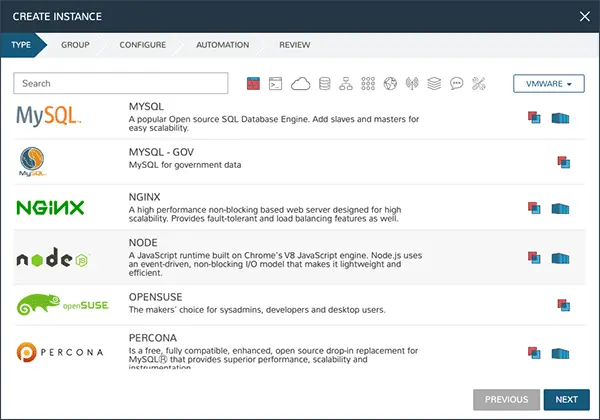
After numerous presentations at various CloudFieldDays (most recently CloudFieldDay 20), it’s time to explore Morpheus Data: a robust self-service platform designed to enhance enterprise agility, control, and efficiency. This powerful tool enables the rapid deployment of on-premises private clouds, centralizes public cloud access, and manages change with integrated cost analytics, governance policies, and automation. In this post, I will share my insights from #CFD6, #CFD8, #CFD11, #CFD14, #CFD17, and the latest, #CFD20.
Everyone can do automation… but who is doing better?
I want to challenge every platform engineer: why invest in costly software when a pipeline with a batch script or IaC might suffice? From my experience, effective automation demands:
- Abstraction: Use templates and models for infrastructure implementation.
- Consistency: Track every action and enable rollbacks for failures.
- Security and Compliance: Monitor who, when, and why actions are taken.
- Organization and Skill: Automate to eliminate manual infrastructure management.
- Speed and Simplicity: Automation must reduce deployment time and simplify organizational setup.
Morpheus Data meets these requirements, offering a centralized platform to manage various infrastructures, including public/private clouds, virtual infrastructure, and Kubernetes. This is a crucial step towards achieving the desired single pane of glass for infrastructure management.
Reducing implementation effort: templating and modeling
Since I delved into platform management, I’ve realized that a key value of automation is reducing deployment time. Simply allowing people to code and run a pipeline isn’t sufficient. The effort required to translate a developer’s needs into declarative code can be challenging, as not everyone is skilled in coding infrastructure, and the code must adhere to cloud-specific rules. This learning curve (both in Infrastructure as Code and cloud architecture) often results in poor outcomes for companies trying to implement DevOps strategies in traditional settings.

Morpheus Data offers significant assistance with its templating system, where many elements are pre-configured. This allows companies to spend minimal time on customization and environment setup, focusing instead on specific automation needs. Developers and application owners can then concentrate on coding, delivering, and maintaining their applications without worrying about the underlying infrastructure. This streamlines the process and enhances efficiency, addressing many of the challenges associated with traditional DevOps implementations.
This feature, known as self-service provisioning, simplifies implementation and allows companies to assign specific roles to each task. This ensures that resources are allocated efficiently.
If you want to learn more, check the official documentation: https://morpheusdata.com/hybrid-cloud-management/cloud-self-service-it/
Better organization with RBAC and Persona
After many years, Shadow IT remains a challenge for companies of all sizes. Organizational units often use infrastructures, tools, and workflows without security and governance approval, justified by business demands. While understandable, it’s essential to balance freedom with security and control. Many cloud providers address this with a multi-account strategy, allowing controlled freedom within set “guardrails” (known as Sandbox environments). However, extending this control to on-premises infrastructure and keeping automation under control to prevent supply-chain attacks is still a significant challenge.
From Morpheus Data’s perspective, self-service provisioning is the key to balancing freedom with security. By implementing fine-grained access controls and integrating with identity management systems like AD, Azure AD, SAML, and OKTA, Morpheus Data manages user onboarding and security effectively, reducing credential sprawl. For tenants, it provides an efficient abstraction layer across multiple infrastructures and cloud services, ensuring control without compromising time to market. This approach maintains a robust security posture while allowing necessary flexibility.
Workflows and Automation with IaC and Configuration Management
When diving into platform technicalities, the preferred method for managing infrastructure involves working with unbound elements and recomposing them into services. From an IT stack perspective, infrastructure elements (networks, load balancers, and cloud-managed elements like databases and message queues) should be delivered independently of the running application. This approach ensures flexibility and scalability, allowing different components to be efficiently managed and integrated as needed, without being tied to specific applications.
Practically, a virtual machine, which is typically independent of the physical infrastructure, is no longer delivered through a preinstalled image. Instead, it is now defined through code that describes operating systems, configurations, services, and applications. This declarative approach, using Infrastructure as Code (IaC), acts as the glue that integrates and manages all these components, enabling a more flexible and scalable delivery of services.
The Morpheus Data team has consistently invested significant effort in integrating key Infrastructure as Code (IaC) technologies, such as Ansible, Terraform, and ServiceNow. This integration unifies automation and workflow management into a single, cohesive platform.
These are some highlights of this powerful platform! I suggest checking out the official site Morpheus Data and joining the vibrant community to test or see how this ecosystem is growing every day. We will undoubtedly hear more about this technology in the future.
In the meantime, if you want to see what happened during CloudFieldDay 20, check out the TechFieldDay YouTube CFD20 playlist.

[…] Automating Infrastructures With MorpheusData […]